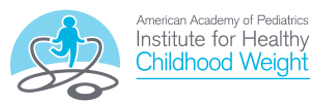Breastfeeding Friendly Environments
Action steps to create breastfeeding friendly environments include:
Provide lactation room and adequate breaks for nursing mothers.
Working outside the home is related to a shorter duration of breastfeeding. Barriers identified in the workplace include a lack of flexibility for milk expression in the work schedule, lack of accommodations to pump or store breastmilk, and concerns about support from employers and colleagues. Providing nursing mothers (both employees and mothers of your patients) a breastfeeding-friendly environment can help to remove these barriers.
Recommended by:
- AAP Policy: Breastfeeding and the Use of Human Milk
- Centers for Disease Control & Prevention (CDC): Strategies to Prevent Obesity and Other Chronic Diseases
- Institute of Medicine (IOM) Report: Accelerating Progress in Obesity Prevention: Solving the Weight of the Nation
For more information:
- United States Breastfeeding Committee: National Agenda for Breastfeeding
- The Centers for Disease Control (CDC) Guide to Breastfeeding Intervention
- US Department of Health and Human Services (HHS): Business Case for Breastfeeding
- National Business Group on Health: Investing in Workplace Breastfeeding Programs and Policies
Provide onsite lactation support and consultation and/or know of lactation support and resources in your community.
As the breastfeeding rates in the US increase, there is now, more than ever, a need for health professionals who are able to care for and support breastfeeding families in their practice. The support your office provides can help to prolong breastfeeding duration.
Recommended by :
- AAP Policy: Breastfeeding and the Use of Human Milk
- Centers for Disease Control & Prevention (CDC): Strategies to Prevent Obesity and Other Chronic Diseases
- Institute of Medicine (IOM) Report: Accelerating Progress in Obesity Prevention: Solving the Weight of the Nation
For more information:
- AAP Fact Sheet: How to have a Breastfeeding Friendly Practice
- AAP Health Professionals Breastfeeding Resource Guide
Advocate for baby friendly hospitals and/or the incorporation of the UNICEF/WHO ten steps to successful breastfeeding.
Many hospitals have practices that are detrimental to breastfeeding including the routine use of formula supplementation and free samples, pacifier use, and the separation of mother and infant. Fortunately, hospitals that have implemented comprehensive policies and practices that support exclusive breastfeeding, and offer an optimal level of care for lactation may become a certified Baby-Friendly Hospital. Research has shown that mothers who gave birth in a Baby-Friendly Hospital had increased rates of initiating breastfeeding and exclusively breast fed their babies for a longer time.
Recommended by:
- AAP Policy: Breastfeeding and the Use of Human Milk
- AAP Endorsed: UNICEF/WHO Ten Steps to Successful Breastfeeding
- Centers for Disease Control & Prevention (CDC): Strategies to Prevent Obesity and Other Chronic Diseases
- Institute of Medicine (IOM) Report: Accelerating Progress in Obesity Prevention: Solving the Weight of the Nation
For more information:
Last Updated
03/10/2022
Source
American Academy of Pediatrics
